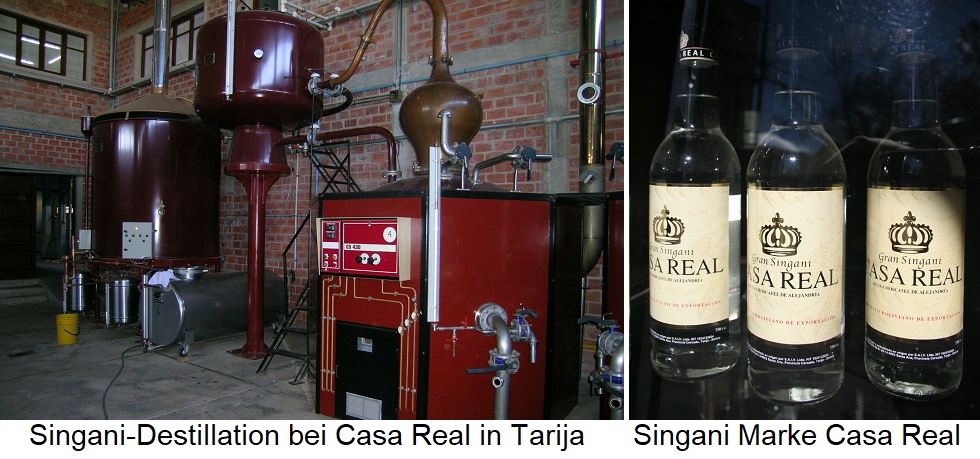A high-proof brandy from Bolivia that is considered the national drink. It was already produced in the 16th century by Augustinian monks who came to the country with the conquistadores. They planted the Muscat d'Alexandrie variety, which ripens to a high level of sweetness in the high-altitude vineyards at 2,600 metres above sea level and is particularly suitable for this purpose. The traditional process used peasant distillation equipment made of clay jars sealed with fresh clay and cooling pipes made of reeds. Singani has been a controlled designation of origin with defined geographical boundaries since 1992. This applies to the central valley of the department of Tarija on the border with Argentina and Paraguay, the valleys of the provinces of North and South Cinti and Tomina in the department of Chuquisaca, Sahapaqui, Luribay and the provinces of Loayza and Murillo in the department of La Paz, the valleys of Turuchipa (Municipio Ckochas), Cotagaita, Vicchoca (Canton Cotagaita), Tumusla, Poco Poco and Tirquibuco (Municipio Betanzos) and Oroncota (Municipio Puna) in the Department of Potosi.

After pressing, the grape must is fermented without mash for between 5 and 21 days in stainless steel tanks. Distillation takes place in alambics (onion-shaped vessels) in one, two or three passes to 71°. It is reduced to drinking strength with Andean spring water and matures for a few months in stainless steel tanks or also in wooden barrels before it is bottled. Singani is offered in up to four quality levels: the cheapest version for mixed drinks (mostly blue colour code), the medium quality (red), the higher quality (black) and, if necessary, special bottlings of the highest quality. It is similar to pisco from Chile or Peru, but more aromatic than the latter. Singani is an ingredient in many traditional Bolivian cocktails, such as the Chuflay and the Yungueñito. See also under spirits.
Picture left: By Dieter Jungblut - photographed by himself, image-free, link.
Picture right: By Cody H. - originally posted to Flickr as Singani!, CC BY 2.0, Link
Voices of our members

There is a vast number of sources on the web where one can acquire knowledge about wine. But none has the scope, timeliness and accuracy of the information in the encyclopaedia at wein.plus. I use it regularly and rely on it.
Sigi Hiss
freier Autor und Weinberater (Fine, Vinum u.a.), Bad Krozingen